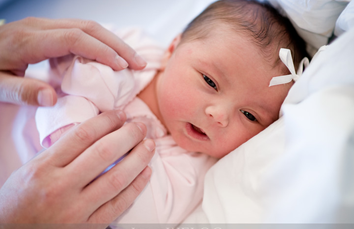
4. Birth weight and factors influencing early and late pregnancy
![]()
 The impact of specific maternal fuels and metabolic measures during early and late gestation on neonatal body composition is not well defined.
The impact of specific maternal fuels and metabolic measures during early and late gestation on neonatal body composition is not well defined.
![]() In a prospective pre-birth cohort study, Tessa L. Crume, of the University of Colorado, and colleagues evaluated 804 pregnant women at 24 weeks or less gestation recruited from prenatal obstetrics clinics at the University of Colorado Hospital in Aurora, Colorado. Participants were asked to participants in two in-person evaluations, the first in early pregnancy (median gestational age, 17 weeks) and the second in mid to late pregnancy (median gestational age, 27 weeks).
In a prospective pre-birth cohort study, Tessa L. Crume, of the University of Colorado, and colleagues evaluated 804 pregnant women at 24 weeks or less gestation recruited from prenatal obstetrics clinics at the University of Colorado Hospital in Aurora, Colorado. Participants were asked to participants in two in-person evaluations, the first in early pregnancy (median gestational age, 17 weeks) and the second in mid to late pregnancy (median gestational age, 27 weeks).
![]() The researchers discovered a substantial positive correlation between maternal estimated homeostasis model assessment insulin resistance (HOMA-IR) in the first half of pregnancy and neonatal fat mass and fat mass percent. This finding was independent of maternal BMI prior to pregnancy.
The researchers discovered a substantial positive correlation between maternal estimated homeostasis model assessment insulin resistance (HOMA-IR) in the first half of pregnancy and neonatal fat mass and fat mass percent. This finding was independent of maternal BMI prior to pregnancy.
![]() “In the first half of pregnancy maternal insulin resistance is an independent predictor of neonatal adiposity; later on, maternal glycemia, even within the normal range, becomes a main driver of fat accretion. Importantly, these relationships are independent of pre pregnancy BMI and gestational weight gain. This data provide additional insights on potential maternal factors responsible for fetal fat accretion and early development of adiposity.
“In the first half of pregnancy maternal insulin resistance is an independent predictor of neonatal adiposity; later on, maternal glycemia, even within the normal range, becomes a main driver of fat accretion. Importantly, these relationships are independent of pre pregnancy BMI and gestational weight gain. This data provide additional insights on potential maternal factors responsible for fetal fat accretion and early development of adiposity.
Read More
For enquiries info@jothydev.net.
Please visit: jothydev.net | research.jothydev.com | diabscreenkerala.net | jothydev.com/newsletter
